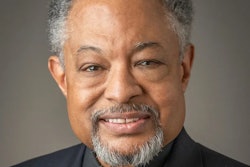Northeastern Illinois University’s ENLACE program works to increase the number of Hispanics in graduate schools in hopes that today’s students will be future faculty. With Hispanics currently comprising just over 3 percent of full-time faculty at four-year institutions in this country, program officials believe they are addressing the low representation of Hispanic faculty head on.
The University of Illinois at Chicago’s Urban Health Program, long a top producer of minority health care professionals, continues to fill the critical need of educating future health practitioners for the state of Illinois. According to the program, 60 percent of Black, Hispanic and American Indian doctors, nurses, dentists and other health care providers in Illinois participated in UHP.
By now many of you are familiar with our “state editions,” in which we take a close look at higher education in a particular state. This spring we have settled in Illinois. Of the 12 states that make up the Midwest, Illinois is the most populous, home to more than 12 million residents. And it is a close second behind Minnesota for having the highest percentage of residents with a bachelor’s degree at 29.2 percent compared to Minnesota’s 30 percent. The national average is 27.2 percent.
Like many of the states we have featured — California, Georgia, New York and Texas to date — Illinois boasts many outstanding public and private higher ed institutions. It has nearly 1 million students enrolled in credit coursework in the state’s nine public universities, 48 community colleges, 94 independent not-for-profit colleges and universities and 30 independent for-profit institutions. In fiscal year 2006, Illinois higher education institutions, agencies and grant programs received $2.2 billion in state general funds, according to the state’s board of higher education.
The state is also investing in an initiative to diversify its faculty ranks.
The Diversifying Higher Education Faculty in Illinois (DFI) initiative is aimed at boosting the number of traditionally underrepresented faculty and administrators at Illinois colleges and universities as well as the higher education governing boards.
The $2.8 million annual fellowship and mentoring program provides stipends and tuition assistance for students to earn master’s and doctoral degrees at Illinois institutions. DFI, which was the result of combining two existing programs, was created following a study on faculty diversity in the state by the Illinois Board of Higher Education. Read more about the initiative and its participants in “Diversifying Faculty in Illinois” by Ronald Roach. In addition, Diverse contributing editor Lydia Lum gives us a bit of a history lesson about the significance of Illinois and its flagship university for Filipino scholars.
“During the early 20th century, the U.S. colonial government in the Philippines sent government scholars known as “pensionados” to the West for higher education,” Lydia writes. “The pensionados — typically young, upper-class Filipino men — would return to their homeland and occupy key social and political positions,” adding that in the Philippines, Illinois and particularly Chicago, became synonymous with students and academics.
Lydia profiles the Filipino American studies program at the University of Illinois at Urbana-Champaign and its faculty in “Finally Taking Root.” Pictured on our cover are the four instructors, making it the largest such program in the country. Over the years, scholars have been educating university administrations about the distinct nature of the Filipino American experience.
“Our niche, as Filipinos, is narrow,” says Dr. Martin Manalansan IV, acting director of Asian American studies at UIUC. “But by discussing Filipino migration and history, these stories tell us more about the United States and the world itself.”
© Copyright 2005 by DiverseEducation.com





















